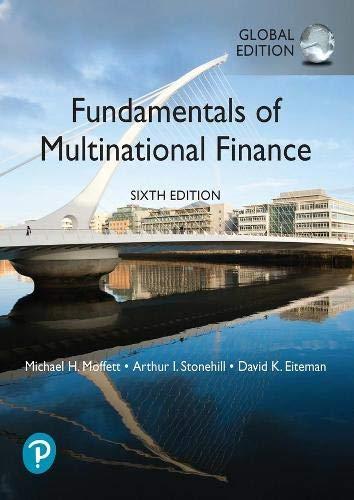Question
Date Deposit (Withdrawal) Date Deposit (Withdrawal) 1/1/17 $9,000 1/1/19 $4,039 1/1/18 ($6,915) 1/1/20 $6,085 The accompanying table, shows a series of transactions in a savings
Date "Deposit
(Withdrawal)" Date "Deposit
(Withdrawal)"
1/1/17 $9,000 1/1/19 $4,039
1/1/18 ($6,915) 1/1/20 $6,085
The accompanying table, shows a series of transactions in a savings account. The account pays
5%
simple interest, and the account owner withdraws interest as soon as it is paid. Calculate the following:
a. The account balance at the end of each year. (Assume that the account balance at December 31, 2016, is zero.)
b. The interest earned each year.
c. The true rate of interest that the investor earns in this account.
a. The account balance at the end of 2017
is
$nothing.
(Round to the nearest dollar.)
The account balance at the end of 2018
is
$nothing.
(Round to the nearest dollar.)
The account balance at the end of 2019
is
$nothing.
(Round to the nearest dollar.)
The account balance at the end of 2020
is
$nothing.
(Round to the nearest dollar.)
b. The annual interest for 2017
is
$nothing.
(Round to the nearest cent.)
The annual interest for 2018
is
$nothing.
(Round to the nearest cent.)
The annual interest for 2019
is
$nothing.
(Round to the nearest cent.)
The annual interest for 2020
is
$nothing.
(Round to the nearest cent.)
c. Compare the true rate of interest to the stated rate of interest. Discuss your finding.(Select the best answer below.)
A.
The true rate of interest is 2.50%,
since savings accounts earn interest compounded semiannually. When an investment earns (semiannual) compound interest, the stated rate of interest is the true rate of interest (return), which is the actual rate of interest earned.
B.
The true rate of interest is
5%,
the same as the stated rate of interest. When an investment earns simple interest, the stated rate of interest is the true rate of interest (return), which is the actual rate of interest earned.
C.
The true rate of interest is 5.10%,
since savings accounts earn interest compounded semiannually. When an investment earns (semiannual) compound interest, the stated rate of interest is the true rate of interest (return), which is the actual rate of interest earned.
Step by Step Solution
There are 3 Steps involved in it
Step: 1

Get Instant Access to Expert-Tailored Solutions
See step-by-step solutions with expert insights and AI powered tools for academic success
Step: 2

Step: 3

Ace Your Homework with AI
Get the answers you need in no time with our AI-driven, step-by-step assistance
Get Started


